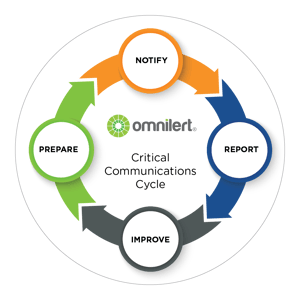The emergency has concluded and it's time for debriefings and getting things back in working order. Did your response go as planned?
The process of collecting data and reviewing reports will help you to assess how the incident unfolded, how effectively the response was executed, and the reach of the communications. With this new information you can now go back and review the crisis communications response process.
When the incident has been resolved, there will be data and practical experiences that can be reviewed to improve the crisis communications plan and response for the future.
Here are 10 action items to fulfill after an emergency has taken place:
Report
1. Reviewing reports
View the Message History and Inbox to help review how everything unfolded.
Data examples to record:
- Times messages were initiated and distributed
- Endpoints that were used
- Contacts that have bad data
2. Determine what worked & what can be improved
Evaluate the entire experience to determine what went well, or what needs tweaking. Isolate where your emergency response team encountered challenges or experienced the most stress. Identify and document the gaps in your emergency response plan.
3. Identify the specific data from your reports that are critical for review and analysis
Organize the data and aspects about your incident that carry the most weight or are most important to your organization.
4. Assess actual performance standards
Compare the outcomes to the set performance standards goal you set during the "Before" stage of the Critical Communications Cycle. Rate your performance objectively.
5. Review your emergency response and the incident with your emergency notification system vendor
Schedule a time to discuss the incident and your response with your Account Manager.
Improve
1. Once data is collected, apply improvements
Revisit the Critical Communications Cycle to help make improvements of previous emergency plans and ENS implementations.
2. Work with your emergency notification system vendor to improve best practices
Go over the incident and review the Proven Success Indicators with your Account Manager.
3. Monitor & manage user participation levels
Identify how you can reach more people next time and how you market the fact you have an emergency notification system to increase participation rates. Evaluate your user management methods to determine what could be most effective.
4. Refine user data and data integrity
Cleansing user data is a never ending job. Use this as an opportunity to update contact information and purge any old data.
5. Test
With your review and analysis complete and your improvements implemented, run frequent tests to ensure success.
Download the whole Critical Communications Cycle whitepaper to delve into the different stages of the Cycle, view the full Critical Communications Cycle Infographic, and learn more about how you can prepare for an emergency using your emergency notification system.


